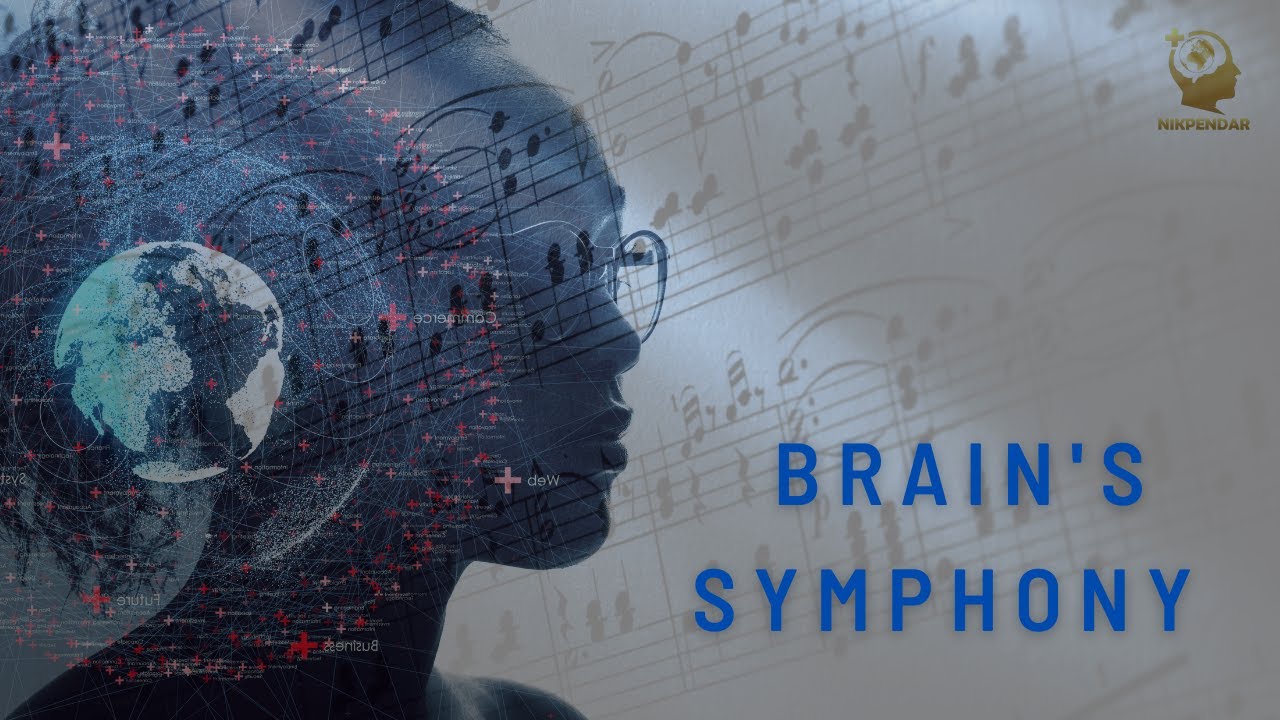
Beginner
● Task 1: Describing a Feeling. Students are shown an image of a person who looks stressed or frustrated. They must describe the feeling using simple vocabulary from the video , such as burdened, suffering, or agony. This task helps them connect new vocabulary to a visual cue and express a basic emotion.
● Task 2: Identifying What Is in Our Control. Students are given a list of simple actions and things from the video . They must identify which are in their control and which are not. For example, they could be given: “our opinion,” “our body,” and “our own actions.” They must check the items that the speaker says are in our control. This focuses on understanding a core concept from the text.
● Task 3: Role-Play: Giving Simple Advice. In pairs, one student will act out a scenario where they are upset about something they can’t control (e.g., “The weather is bad today, so I can’t go to the park.”). The other student will offer a piece of advice based on the video , such as, “Don’t cling to what you can’t control.” This task helps them practice using target language in a practical, conversational scenario.
Intermediate
● Task 1: Explaining a Core Concept. Students are asked to explain the “dichotomy of control” in their own words. They should use the examples from the text, such as the difference between controlling one’s opinion and not controlling one’s reputation. This task requires them to summarize and explain a complex concept using specific terminology.
● Task 2: Creating a Scenario. Students are given a difficult situation (e.g., “Your friend doesn’t want to hang out with you anymore”). They must create and act out a short scenario where they describe their feelings and then explain how they would use the speaker’s advice to cope with the situation without clinging to it. This promotes creative application of the language.
● Task 3: Discussion: The “Dinner Party” Analogy. Students will work in a small group to discuss the speaker’s “dinner party” analogy. They should explain what the analogy means and apply it to a real-life situation. They should also state their opinion on whether this is a useful way to think about life. This task requires a higher level of abstract thinking and the ability to articulate opinions.
Advanced
● Task 1: Delivering a Short Presentation. Students will prepare and deliver a short talk (2-3 minutes) on one of the three categories of things we should stop clinging to (objects/people/power, opinions of others, or outcomes/ideas). They must use the target vocabulary accurately and present the information in a clear, well-structured way.
● Task 2: Debating a Topic. Students will work in pairs to debate the speaker’s advice to “not care about anything” outside of one’s control. One student will argue for the speaker’s position using evidence from the text, while the other will argue against it, using their own knowledge and critical thinking. This task requires high-level argumentative and discourse skills.
● Task 3: Role-Play: A Philosophical Conversation. In pairs, one student will act as a person who has just suffered a personal loss (e.g., a friend moving away). The other student, acting as a stoic philosopher, will have a conversation with them, using language from the videoto help the person understand that they are only borrowing the things they love. This task requires a high level of empathy and sophisticated use of philosophical language in a nuanced social context.
Beginner
● Task 1: Listening for Key Words. Students listen to the monologue and identify key vocabulary. They are given a list of words like well-being, control, suffering, and opinion and must check them off as they hear them. This task helps learners recognize core vocabulary in a complex spoken context.
● Task 2: Simple True/False Statements. After listening to a specific section, students are given a series of statements and must decide if they are true or false based on the video . For example: “The speaker says you can control your body” (False) or “Epictetus says that people are burdened because they care about too many things” (True). This activity helps learners extract specific, explicit details.
● Task 3: Simple Question Answering. Students listen to short, distinct sections and answer simple “wh-” questions. For example: “What is the name of the philosopher in the video?” (Epictetus) or “What is a ‘dichotomy’?” (A division into two parts). This task focuses on identifying and retrieving basic facts.
Intermediate
● Task 1: Explaining a Core Concept. Students listen for the speaker’s definition of the dichotomy of control. They then explain what it means in their own words, using examples from the text about what is and isn’t in our control. This task helps them understand how a speaker defines a complex, abstract concept.
● Task 2: Summarizing a Metaphor. Students listen to the section about the dinner party analogy. They must summarize the analogy, explaining what the speaker means by “taking your share with moderation” and “not stretching your desire towards it.” This task requires learners to understand a concept and its underlying mechanisms.
● Task 3: Explaining a Paradox. Students listen to the speaker’s discussion about being liked. They must explain the paradox: that while being liked has benefits, the constant pursuit of it is exhausting and takes away from one’s own well-being. This task requires synthesizing information from a structured set of instructions.
Advanced
● Task 1: Analyzing an Argument. Students listen to the speaker’s main argument and identify the central thesis (that we must stop clinging to what we cannot control) and the evidence provided to support it. They should identify the three categories of things to let go of and the reasons for doing so. This task demands a high level of comprehension and the ability to follow a complex, multi-point argument.
● Task 2: Listening for Nuance. Students listen for the speaker’s distinction between owning something and borrowing it. They must then explain this nuance and provide an example from the videoto illustrate the difference. This task requires students to understand a subtle but important distinction.
● Task 3: Critical Evaluation. Students listen for the speaker’s claims and examples. They then write a short essay that evaluates the effectiveness of his argument. For example, they can discuss whether they find the “borrowed goods” analogy effective or if they think his claims about letting go of the opinions of others are an oversimplification. This task requires students to not only understand the content but also to form and articulate a critical opinion.
Beginner
● Task 1: Vocabulary Matching. Students read a list of simple words from the videoand match each to a provided definition or simple synonym. Words could include: suffering, happy, control, opinion, and actions. This task helps build foundational vocabulary.
● Task 2: Basic Comprehension Questions. Students read a short, coherent section of the videoand answer simple “wh-” questions to find explicit information. For example, “What is a ‘dichotomy’?” or “What does the speaker say about things not in our control?” This focuses on literal comprehension and detail extraction.
● Task 3: Simple True/False Statements. Students read a series of statements based on a short segment of the videoand decide if each is true or false. For instance, “Epictetus said people are happy because they care about too many things” (False) or “The speaker says our body is not in our control” (True). This practice reinforces reading for explicit details.
Intermediate
● Task 1: Explaining a Core Concept. Students read the videoand write a short paragraph explaining the “dichotomy of control.” They should use the examples from the text to distinguish between things in our control (e.g., our actions) and things not in our control (e.g., our reputation). This task helps learners understand and articulate a complex idea.
● Task 2: Analyzing a Metaphor. Students read the section about the “dinner party” analogy. They then write a paragraph explaining the comparison, detailing what “taking your share with moderation” and “not stretching your desire towards it” mean in a real-life context. This task helps students understand and analyze figurative language.
● Task 3: Summarizing a Key Idea. Students read the section about not clinging to the opinions of others. They must write a paragraph summarizing the speaker’s argument for why focusing on others’ opinions is not a good use of our energy. This task requires synthesizing information from a specific section of the video .
Advanced
● Task 1: Analyzing an Argument. Students read the entire videoand write a detailed outline of the speaker’s main arguments. They should identify her central thesis (that we should only focus on what we can control) and the evidence provided to support it, including the three categories of things to let go of. This task requires a high-level understanding of the monologue’s overall structure and logical flow.
● Task 2: Examining a Nuanced Claim. Students read the section where the speaker claims we should view everything we have as “borrowed.” They then write an essay (2-3 paragraphs) that explains the nuance of this claim and analyzes how it relates to the concept of not clinging to objects and people. This task requires a deep understanding of a subtle philosophical distinction.
● Task 3: Summarizing and Critiquing a Philosophical Argument. Students read the entire videoand write an essay that summarizes the speaker’s core argument. They should also include a brief critique of the argument, discussing its strengths and weaknesses from a critical reading perspective. For example, they can discuss whether the speaker’s advice is too simple for complex human emotions like grief or attachment.
Beginner
● Task 1: Vocabulary Matching and Writing. Students read a list of key words from the videolike suffering, happy, control, and opinion. They then write a simple sentence for each word, demonstrating their understanding of its meaning in context.
● Task 2: Simple Sentence Completion. Students are given a paragraph from the videowith key words removed. They must read the paragraph and write in the missing words using a provided word bank. This helps them practice spelling, vocabulary, and grammar in a scaffolded context.
● Task 3: Simple List Creation. Students are asked to create a list of things from the videothat are in our control and a list of things that are not. They should use simple phrases like “our opinion” or “our body.” This task focuses on extracting and organizing key information from the text.
Intermediate
● Task 1: Summarizing a Concept. Students are asked to write a short paragraph explaining the “dichotomy of control” in their own words, using examples from the text about what is and isn’t in our control. This task requires them to summarize and synthesize information from the text.
● Task 2: Writing a Personal Response. Students write a short journal entry or reflective paragraph about a time they felt “burdened” by something they couldn’t control. They should then write about how they could have applied the speaker’s advice to cope with the situation, using at least three words or phrases from the video . This task encourages them to connect the video ‘s ideas to their own lives.
● Task 3: Explaining a Metaphor. Students read the section about the dinner party analogy. They then write a short paragraph explaining the comparison, detailing what “taking your share with moderation” and “not stretching your desire towards it” mean in a real-life context. This task helps them practice writing about figurative language.
Advanced
● Task 1: Argumentative Essay. Students write a short argumentative essay (e.g., 200 words) in which they agree or disagree with the speaker’s claim that we should not care about what others think. They must support their opinion with evidence from the videoand their own ideas. This task requires a high level of critical thinking, organization, and persuasive writing.
● Task 2: Analyzing a Nuanced Claim. Students write a short essay explaining the speaker’s claim that we should view everything we have as “borrowed.” They should analyze the nuance of this statement and explain its importance to the overall message about not clinging to things. This task requires sophisticated analytical skills.
● Task 3: Creating a Persuasive Text. Students are asked to imagine they are creating a brochure or a social media post to promote the idea of Stoic philosophy. They must write a persuasive text that summarizes the speaker’s key ideas and encourages others to try the philosophy for a “strong and stable sense of well-being.” This task requires a high level of creativity and the ability to adapt a message for a specific audience.





